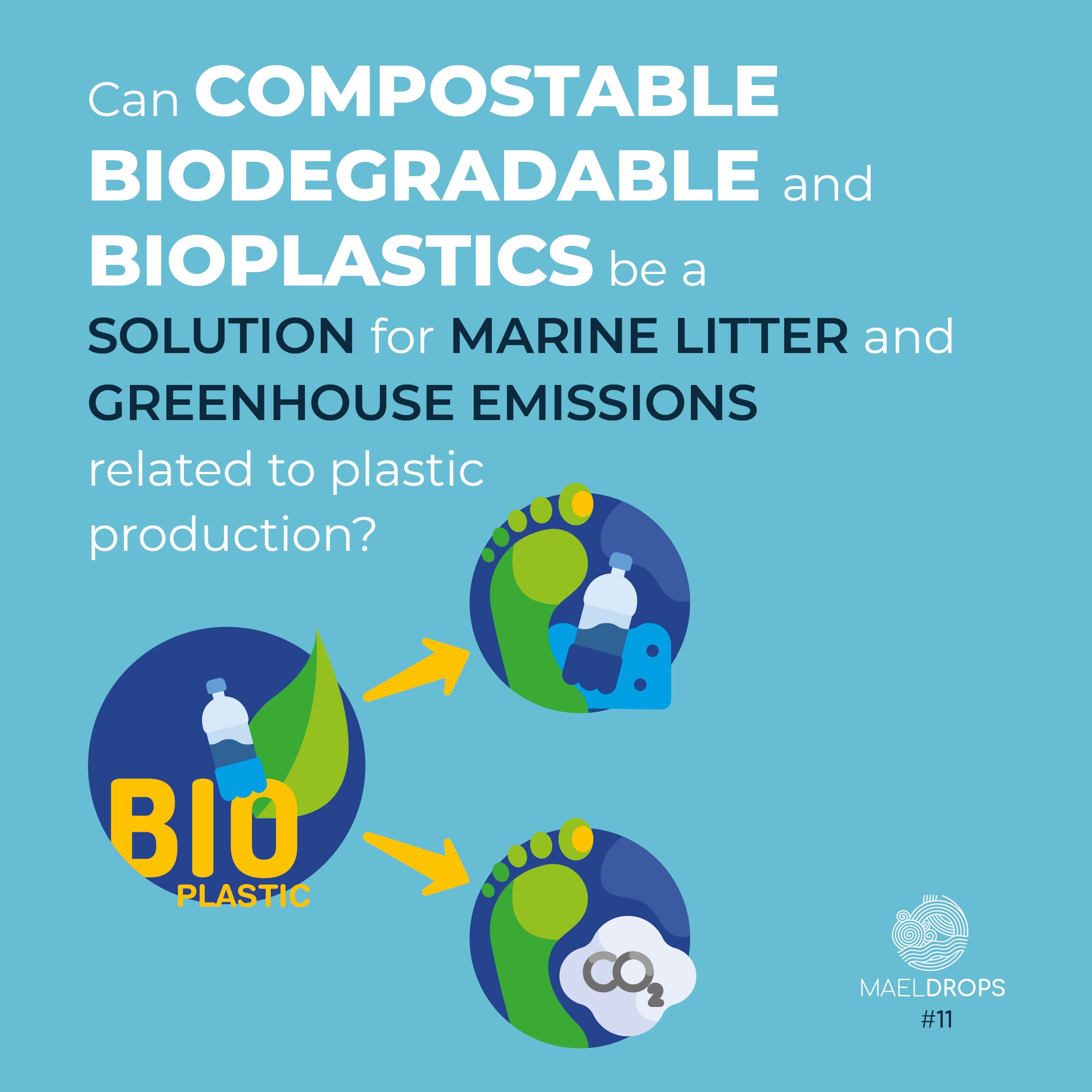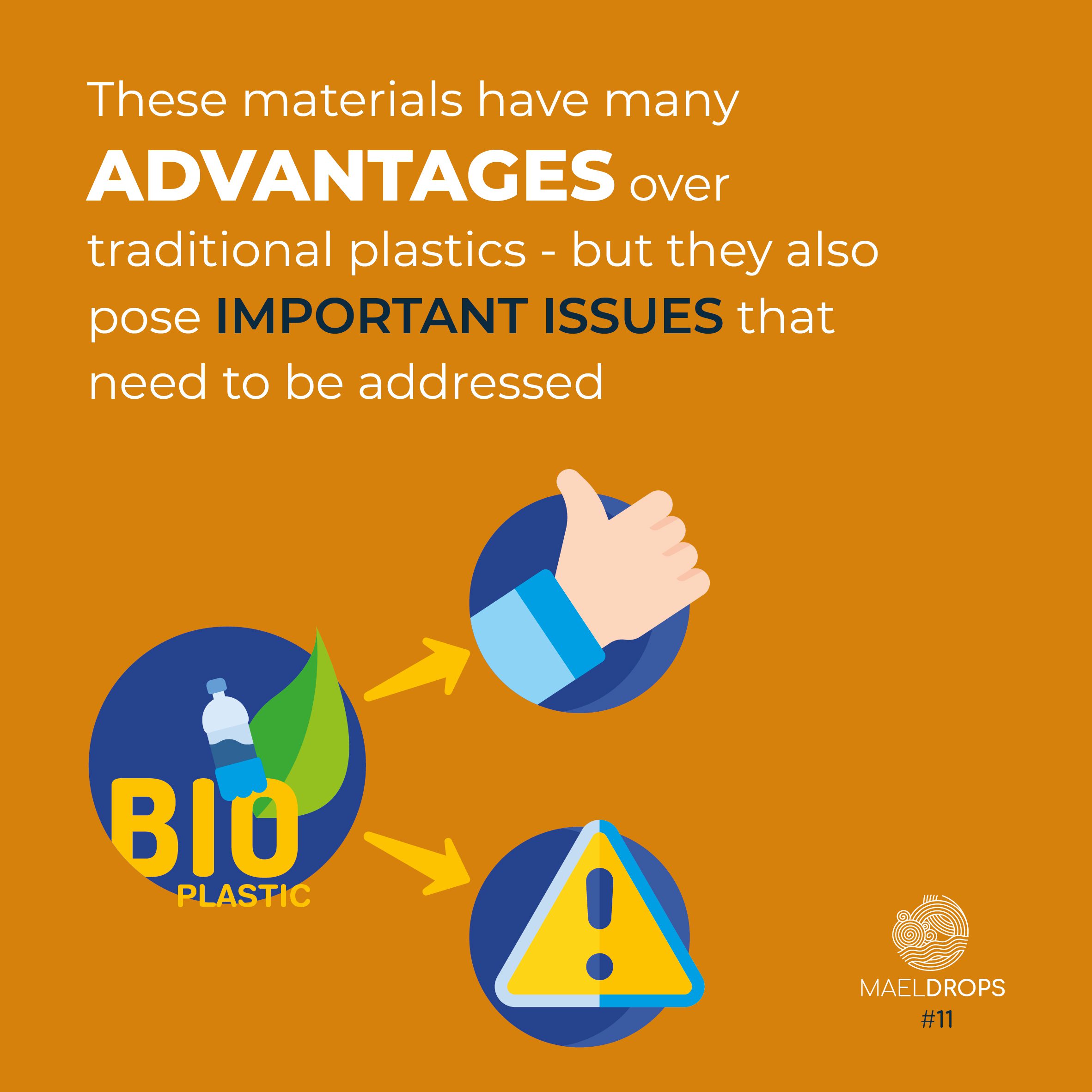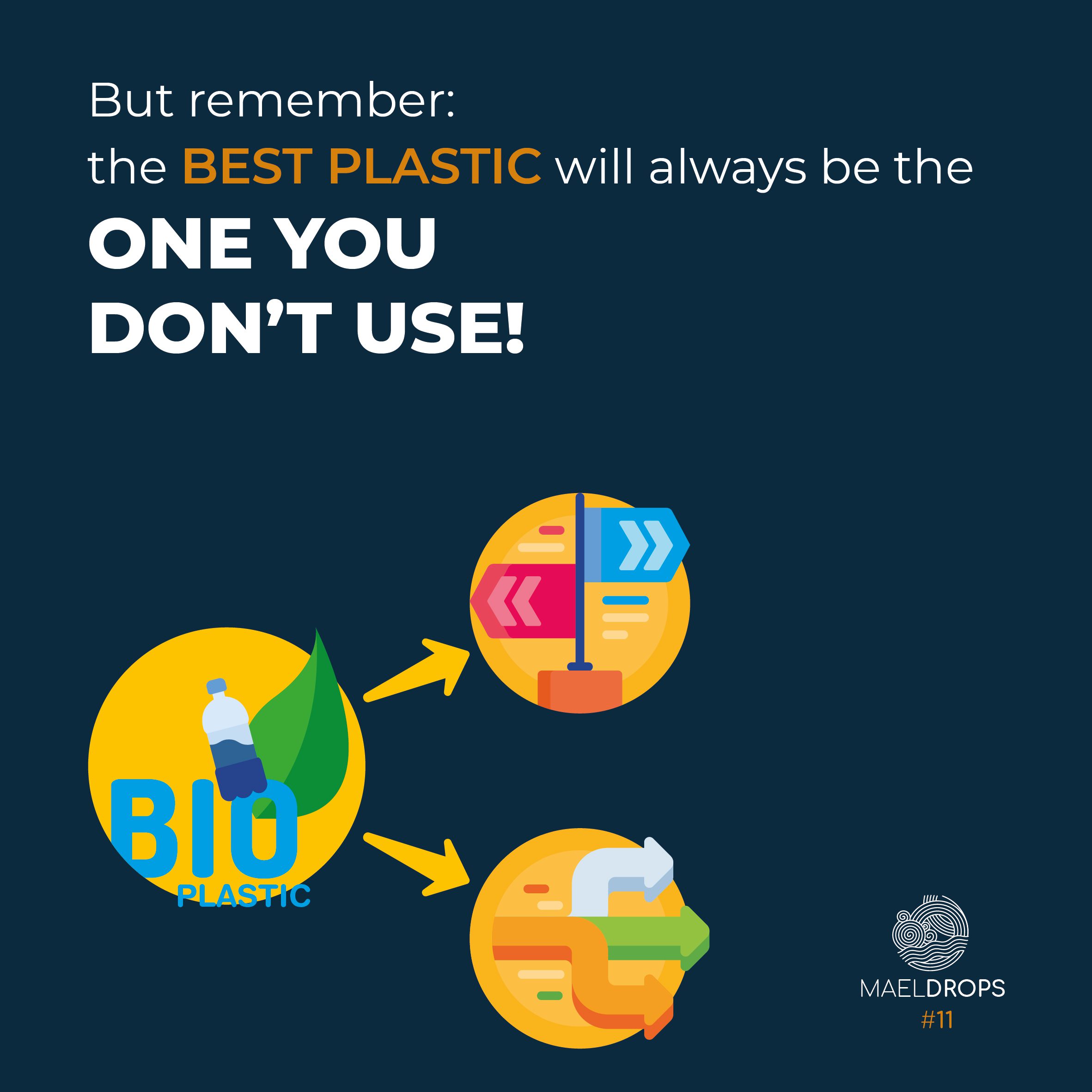MAELDrop #11 | Bioplastics, biodegradable and compostable plastics: first episode

As broadly known, plastics represent the main component of marine litter. Moreover, the current global plastic production is responsible for the release of large amounts of CO2 emissions, which are fueling climate crisis. Can then compostable, biodegradable and bioplastics be a sustainable alternative to traditional plastics?
“Alternative plastics” present several environmental advantages, but they also pose important issues that need to be addressed according to their types. The European Environment Agency refers to biodegradable plastics as being those materials which are capable of breaking down (biodegrading) under certain conditions and mediums; compostable plastics instead are those materials designed to biodegrade under the conditions of an industrial composting plant or industrial anaerobic digestion plant with a subsequent composting phase, or, at lower temperatures in the conditions of a well-managed home composter. On the other side, bioplastics are those made biomass sources (ex. food waste) as an alternative to petroleum. But beware, because not all bioplastics are biodegradable!
In fact, alternative plastics can take quite some time before fully degrade: a study conducted by researchers at the University of Plymouth showed that even plastics classified as compostable, while disappearing in water within three months, were still present in the soil after 27 months. Other materials tested, including a bag classified as biodegradable, remained intact in both water and soil after as much as 3 years! Anyway, times and efficiency of biodegradation depend on the kind of bioplastics and the environmental conditions.
This highlights one of the most important issues when talking about biodegradable, compostable and bioplastics: it is necessary to dispose them in the right way to ensure they can degrade without harming the environment.
The topic of bioplastics and compostable plastics is very broad, so we will talk more about it in the future. And remember: the best plastic will always be the one you don’t use!



